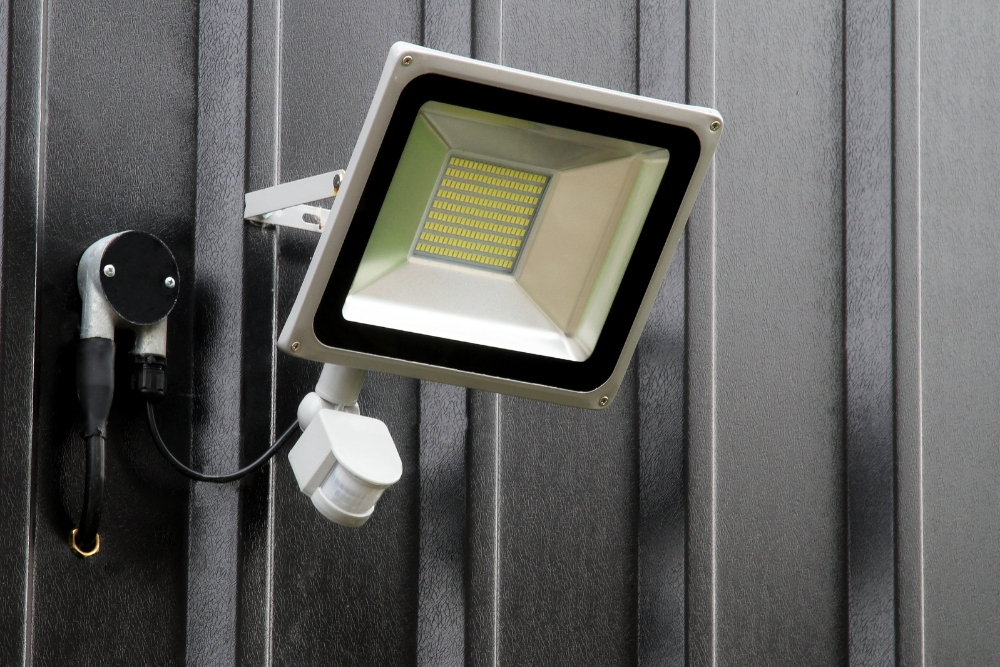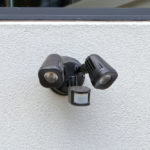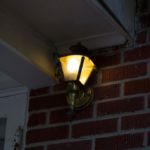Motion sensor lights are one of the most practical additions to a home security system.
On the one hand, they shoo away unwanted guests, and on the other, they provide visibility for you and your cohabitants, helping you to navigate your driveway, pathways, yards, and outdoor steps come nightfall.
But as reliable a part of the home security network as they are, they can certainly misbehave from time to time.

Sometimes they refuse to turn off once triggered, other times they won’t turn on at all, and on occasion, they can turn on for seemingly no reason at all, which is spooky happening to say the least!
Not to worry, though; a little bit of strange behavior doesn’t necessarily mean that your security lights are on the fritz.
As is the case with a lot of tech these days, normally all you need to do to rein them back in is either reset them, or make a few adjustments to their settings, and we’re going to be telling you how to do both of those things, right here, right now!
Resetting Your Motion Sensor Lights
We’ve got some fantastic news for you; resetting your motion sensor lights is a walk in the park. It doesn’t require any tools or specialist know-how. In fact, usually, all you need to do is turn them off, let them sit for 30 seconds or so, then turn them back on again.
If your motion sensor lights feature a power switch, you can use that, but don’t hesitate to switch them off at the breaker either; the results will be the same.
With any luck, when you fire them back up, they’ll have kicked those rather strange habits they’ve picked up all of a sudden.
If they’re still misbehaving, we’d recommend switching them off again for around 5 minutes, then turning them back on. Some lights may simply need a longer respite period in order to complete their reset.
Should the problems persist, it’s likely that a reset isn’t the solution, meaning it’s time to go deeper with your troubleshooting. In this scenario, it’s usually a sensor fault or a bad bulb to blame for the erroneous behavior.
Security Lights With Dedicated Resets Buttons
Before you take our advice and start flicking switches, it’s always a good idea to consult the user manual that came with your motion sensor lights. Some newer “smart” models, such as the Ring Floodlight, feature dedicated reset buttons.
To reset this kind of motion sensor light, locate the reset button (found on top of the camera of the Ring Floodlights), then hold it down for a certain amount of time. The Ring Floodlight requires a 30-second depression, but other models may require a shorter or longer push.
The light will usually feature some sort of LED indicator that will flash when you remove your finger from the button, signaling that the reset is in motion.
Why Do You Need To Reset Your Motion Sensor Lights?
It’s not just motion sensor lights that benefit from the odd reset. Any bit of tech will develop glitches from time to time, especially if it has numerous customizable parameters — it’s just one of those things.
Here are a few reasons why the hard reset may be necessary…
System Errors
As you dial in your custom settings, you’re essentially having a conversation with the mechanisms within your motion sensor light, and sometimes, things get lost in translation due to a bug in the system, causing an error.
The error becomes hardwired into the command chain of the custom settings, causing misbehavior. When you trigger a reset, you erase your custom settings (irritating, we know), but you also take down the error along with them.
Electrical Surges
An electrical surge means that, for a moment, peak voltage has been exceeded, which can play havoc with our electrical devices. The arc of electrical force generates excess heat within the device, sending the circuit board haywire.
A bad surge can break a motion sensor light, but most of the time, a quick reset is all that’s required to revitalize them.
Power Outages
Okay, so this is sort of the same thing. When the power returns after an outage, an electrical surge occurs, overheating our gadgets and gizmos.
Changing Motion Sensor Light Settings
Most motions sensor lights have settings you can dip into to modify their performance to your tastes. A lot of the time, a quick settings calibration will fix a faulty security light.
Here are some problems you might be having…
Light Won’t Turn Off
If your light doesn’t turn off, there are two settings to take a look at, the sensitivity and the duration.
A light with a sensor running on all cylinders will detect all sorts of motion, such as a butterfly flapping by or an autumn leaf falling to and fro to the floor. So, what appears to be a light that won’t turn off is actually a light that is perpetually being triggered.
Some lights have the ability to turn on for 30 minutes at a time, which can also appear as if it’s refusing to turn off, so reducing the duration of the illumination should solve the problem.
Lights Won’t Turn On
If your lights don’t turn on, it’s another sensor issue, but this time, you’ll need to crank the sensitivity rather than reduce it.
How To Reset Motion Sensor Lights — Summing Up
Resetting your security lights is no challenge. Simply turn them off, let them rest for a little while, turn them on again, and voilà; mission accomplished!
Your next port of call should be to adjust the settings of your motion sensor lights, and if you still can’t get them to behave, try replacing the bulbs.
If the fresh bulb doesn’t solve the issue, it’s almost certainly the sensor, but, thankfully, sensors can be replaced almost as easily as light bulbs, meaning you don’t have to break the bank buying completely new motion sensor lights — hurray!





